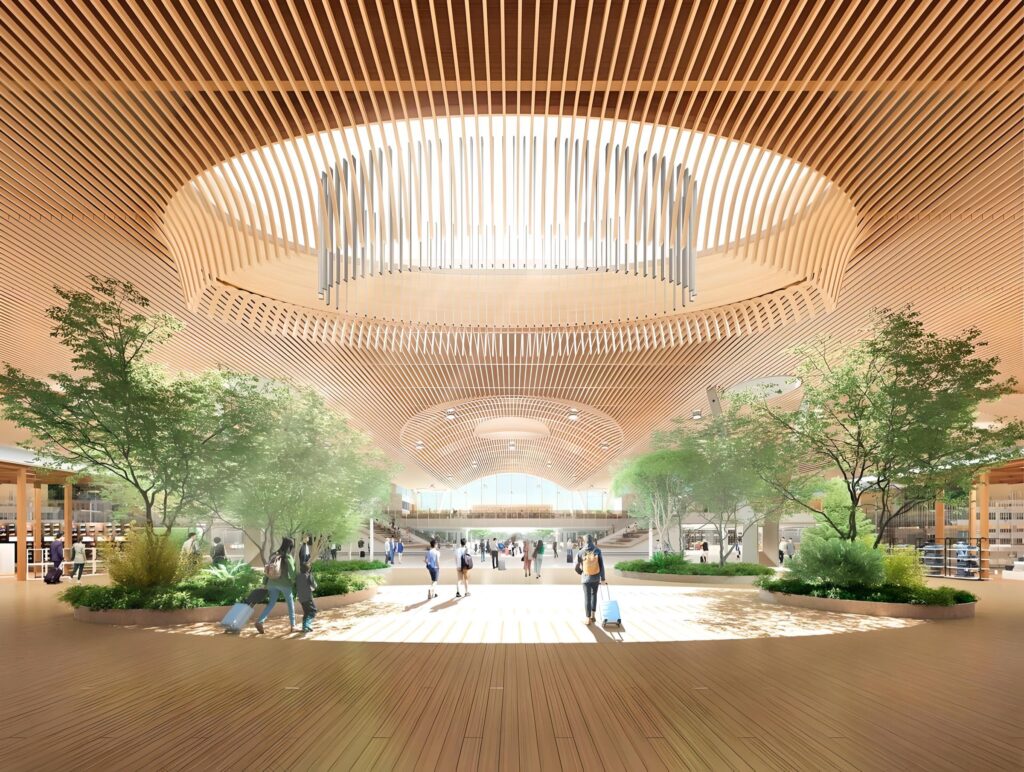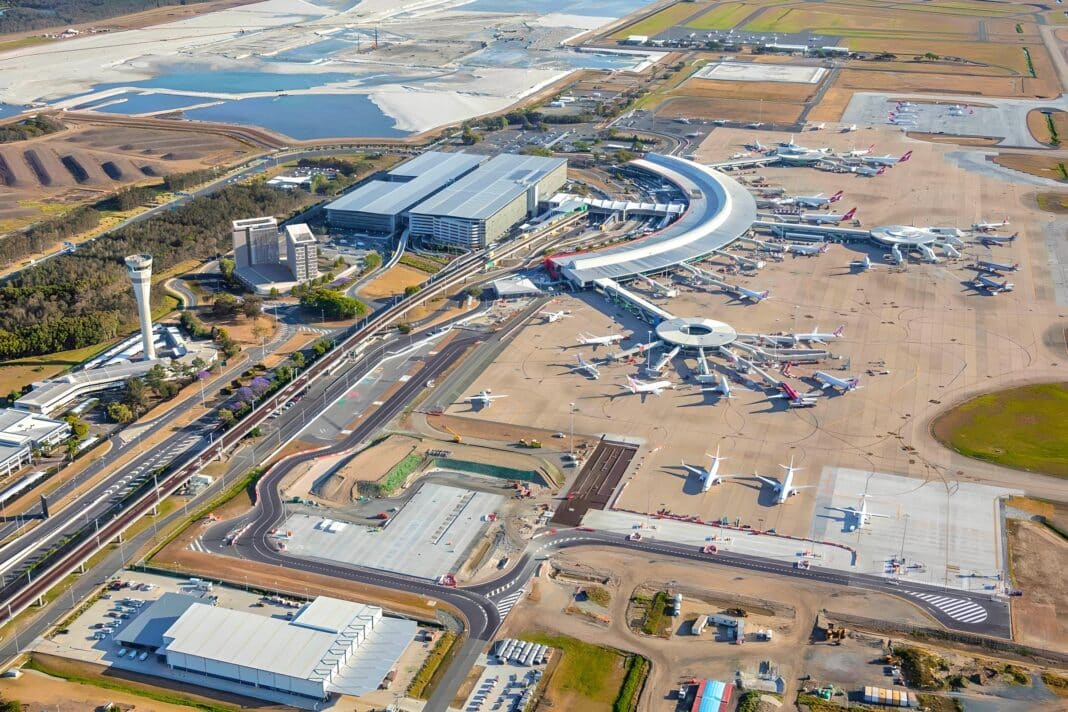Brisbane Airport Corporation is embarking on Australia’s largest and most ambitious aviation project in history, with the AU $5 Billion project set to break ground later this week.
It is part of the airport’s Future BNE project, which includes more than 150 projects which aim to make Queensland’s largest transportation hub “more useable and sustainable ahead of the Brisbane 2032 Olympics.”
Brisbane is the most connected domestic airport in Australia, and Future BNE will include upgrades to the Domestic Terminal and International Terminal and a new Terminal 3 Precinct.
“We’re investing now to get ahead of the population growth curve, ready for 2032 and beyond. We’re investing now so Queenslanders and the world are more closely connected. And we’re investing now to be a leader in sustainability,” according to Brisbane Airport Corporation CEO Gert-Jan de Graaff.
However, despite ambit claims around sustainability, Wood Central can confirm that low-carbon construction materials, like mass timber, will not be utilised in the structural upgrades to the airport.
It can also reveal that the only timber referenced in the design “is Spotted Gum furniture used in the gate departure lounges.”
According to Timber Queensland Strategic Relations & Communications Manager Clarissa Brandt, it makes sense to maximise the use of structural and appearance timber if they are genuine about spearheading sustainability efforts and contributing to Queensland’s decarbonisation goals.
“With the building and construction industry responsible for 40% of global emissions, all infrastructure projects must strive to utilise materials with low embodied carbon and the potential to participate in a circular economy,” Ms Brandt said.
Wood Central understands that the significant upgrades to the airport will use steel, aluminium and concrete, which, according to the UN, “is responsible for 23% of the overall global emissions.”
Last month, it reported that substituting carbon-intensive building materials, like steel and concrete, for bio-based materials like timber, bamboo, and biomass will drive emissions savings by up to 40%.
Ms Brandt said, “Timber is one of the most environmentally friendly building materials available,” before continuing that “it is a renewable resource that has low embodied energy and stores carbon. It can be recycled and used through dismantling and deconstruction.”
Globally, airports are embracing mass timber construction to meet the needs of modern aviation.

Earlier this month, Wood Central reported that the Port of Seattle is using glulam beams and cross-laminated panels to become North America’s “greenest port” whilst a 12,000 square metre mass timber roof is the centrepiece of Portland International Airport’s USD 2.15 billion redevelopment.
“The biophilic benefits of increased timber usage lowers blood pressure and heart rates, provide a perception of warmth, and connection to living things,” Ms Brandt said.
“Airports can be stressful environments, delivering health and well-being benefits for travellers and airport staff through material selection is becoming increasingly popular worldwide given there is evidence pointing to an airport experience being a significant contributor to the enjoyment of a trip.”
In August, Ms Brant hosted the Timber 2032 Forum, with Queensland Government decision-makers meeting with industry to discuss the use of mass timber construction ahead of the Brisbane 2032 Olympic and Paralympic Games.
At the same time, a design alliance involving Australian-based Buchan architects, Japanese architect Nikken Sekkei and international sports architects HKS have challenged Brisbane to embrace sustainable timber designs ahead of the Brisbane 2032 Olympic Games.
“Queensland’s natural wonders are a drawcard for interstate and international travellers. Why wouldn’t we welcome them to the Sunshine State with timber-rich airport facilities that exude character, beauty, charm, warmth, and a distinctive Queensland style?”
Managed by Lend Lease, the projects will also see the expansion of aircraft parking and aprons, the resurfacing of the legacy runway, and the construction of a state-of-the-art Aeromedical facility to centralise medical repatriation and emergency services at Brisbane Airport.
“In the past year, 20 million passengers travelled through Brisbane Airport, and we expect that to grow by 10 million passengers in the coming decade as Queensland’s population expands and our terminals need to be ready,” said Mr de Graaff.
“More than 20,000 people come to work at Brisbane Airport every day, and we forecast that to grow to 30,000 by the time the flame is lit at the Opening Ceremony for the 2032 Olympic and Paralympic Games. Future BNE will also create thousands of construction jobs as our 150 projects come to life.”






